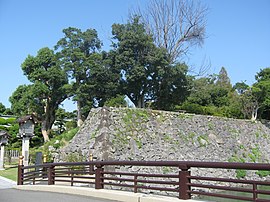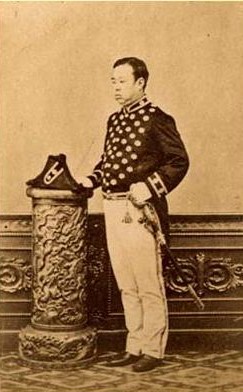
Back Kumamoto (Han) German Dominio de Kumamoto Spanish قلمرو کوماموتو Persian Domaine de Kumamoto French 熊本藩 Japanese 구마모토번 Korean Domínio de Kumamoto Portuguese Кумамото (княжество) Russian Кумамото-хан Ukrainian 熊本藩 Chinese
The Kumamoto Domain (熊本藩, Kumamoto-han), which was in existence from 1600 to 1871, had a significant influence in the region. Initially, it controlled its vast territory of 520,000 koku, which later expanded to 540,000 koku after the division of the 8th generation territory and the establishment of branch domains during the Hosokawa family era. In 1871, the domain faced territorial changes as it lost control over Kuma District and Amakusa District in Higo Province (present-day Kumamoto Prefecture), as well as parts of Bungo Province (now Oita Prefecture), including Tsuruzaki and Saganoseki. This domain was also known as Higohan and its administrative center was situated at Kumamoto Castle in Kumamoto City. Despite not having complete control over Higo, the Hosokawa clan of the Kumamoto Domain held the status of feudal lords, or Daimyo, in the region.[1][2][3][4]
| Kumamoto Domain 熊本藩 Kumamoto-han | |
|---|---|
| Domain of Japan | |
| 1600–1871 | |
 Walls of Kumamoto Castle | |
Mon of the Hosokawa clan
| |
 Keep of Kumamoto Castle | |
| Capital | Kumamoto Castle |
| Government | |
| • Type | Daimyō |
| Daimyō | |
• 1588-1611 | Kato Kiyomasa (first) |
• 1870-1871 | Hosokawa Morihisa (last) |
| Historical era | Edo period Meiji period |
• Established | 1600 |
• Disestablished | 1871 |
| Today part of | Kumamoto Prefecture |



- ^ Hellyer, Robert; Fuess, Harald (2020-05-07). The Meiji Restoration: Japan as a Global Nation. Cambridge University Press. ISBN 978-1-108-80047-1.
- ^ Cobbing, Andrew (2008-12-18). Kyushu: Gateway to Japan: A Concise History. Global Oriental. ISBN 978-90-04-21312-8.
- ^ Yamaji, Aizan (2020-08-06). Essays on the Modern Japanese Church: Christianity in Meiji Japan. University of Michigan Press. ISBN 978-0-472-90191-3.
- ^ Lewis, James B. (2014-12-05). The East Asian War, 1592-1598: International Relations, Violence and Memory. Routledge. ISBN 978-1-317-66274-7.
